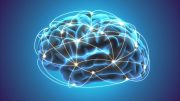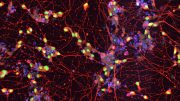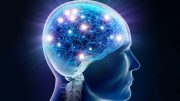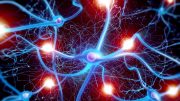
Neuroscientists have discovered that intensive exercise can slow the progression of Parkinson’s disease. The research unveils a previously unobserved mechanism, providing a path for the development of new non-pharmacological treatments. The study also highlights the neuroprotective effect of exercise, detailing its impact on neuronal survival, brain plasticity, and motor control.
Intensive exercise can slow the progression of Parkinson’s disease by improving brain plasticity and neuronal survival, according to a study from the Catholic University, Rome Campus, and A. Gemelli IRCCS Polyclinic Foundation. The findings may guide the development of non-drug treatments for the disease.
New Findings in Parkinson’s Research
Neuroscientists from the Faculty of Medicine of the Catholic University, Rome Campus, and the A. Gemelli IRCCS Polyclinic Foundation have found that intensive exercise could decelerate the progression of Parkinson’s disease. They have also described the biological mechanisms underlying this process, providing potential avenues for new non-pharmacological treatment approaches.
The study, titled “Intensive exercise ameliorates motor and cognitive symptoms in experimental Parkinson’s disease by restoring striatal synaptic plasticity,” was published on July 14 in the journal Science Advances. The investigation was led by the Catholic University, Rome Campus, and A. Gemelli IRCCS Polyclinic Foundation, with the collaboration of several research institutes including the San Raffaele Telematic University Rome, CNR, TIGEM, University of Milan, and IRCCS San Raffaele, Rome.
Funding and Implications
This research was funded by the Fresco Parkinson Institute, New York University School of Medicine, The Marlene and Paolo Fresco Institute for Parkinson’s and Movement Disorders, the Ministry of Health and MIUR (related to the PRIN 2017 call and CNR-MUR calls, two different grants). The study unveiled a new mechanism explaining the beneficial effects of exercise on brain plasticity.
Paolo Calabresi, the Full Professor of Neurology at the Catholic University and Director of the UOC Neurology at the University Polyclinic A. Gemelli IRCCS, said: “We have discovered a never observed mechanism, through which exercise performed in the early stages of the disease induces beneficial effects on movement control that may last over time even after training is suspended.” He added that this finding could guide the development of new non-drug treatments to be used alongside existing drug therapies.
Previous Knowledge and New Evidence
Previous research had indicated that intensive physical activity was linked to increased production of a vital growth factor, the brain-derived neurotrophic factor (BDNF). The authors successfully replicated this phenomenon using a four-week treadmill training protocol in an animal model of early-stage Parkinson’s disease. They demonstrated, for the first time, how this neurotrophic factor contributes to the beneficial effects of physical activity on the brain.
Investigating the Neuroprotective Effect
The study, led by Drs. Gioia Marino and Federica Campanelli, researchers at the Faculty of Medicine, Catholic University, Rome, lends experimental support to the neuroprotective effect of exercise. They employed a multidisciplinary approach using different techniques to measure improvements in neuronal survival, brain plasticity, motor control, and visuospatial cognition.
A key observation was that daily treadmill training sessions reduced the spread of pathological alpha-synuclein aggregates. In Parkinson’s disease, these aggregates cause gradual and progressive dysfunction of neurons in specific brain areas (the substantia nigra pars compacta and the striatum – constituting the so-called nigrostriatal pathway) essential to motor control.
Understanding the Biological Mechanism
The neuroprotective effect of physical activity is associated with the survival of neurons that release the neurotransmitter dopamine. This survival is crucial for striatal neurons’ ability to express a form of dopamine-dependent plasticity, which is otherwise impaired by the disease. Consequently, motor control and visuospatial learning, both dependent on nigrostriatal activity, are preserved in animals undergoing intensive training.
The study also revealed that BDNF, whose levels rise with exercise, interacts with the NMDA receptor for glutamate. This interaction enables neurons in the striatum to respond effectively to stimuli, with effects that endure beyond the exercise period.
Looking to the Future
Professor Paolo Calabresi said: “Our research team is involved in a clinical trial to test whether intensive exercise can identify new markers to monitor the disease progression slowing in early-stage patients and the profile of the progression of the disease. As Parkinson’s disease is characterized by important neuroinflammatory and neuroimmune components, which play a key role in the early stages of the disease, the research will keep on investigating the involvement of glial cells, highly specialized groups of cells that provide physical and chemical support to neurons and their environment. This will allow us to identify molecular and cellular mechanisms underlying the observed beneficial effects,” he concluded.
Reference: “Intensive exercise ameliorates motor and cognitive symptoms in experimental Parkinson’s disease restoring striatal synaptic plasticity” by Gioia Marino, Federica Campanelli, Giuseppina Natale, Maria De Carluccio, Federica Servillo, Elena Ferrari, Fabrizio Gardoni, Maria Emiliana Caristo, Barbara Picconi, Antonella Cardinale, Vittorio Loffredo, Francesco Crupi, Elvira De Leonibus, Maria Teresa Viscomi, Veronica Ghiglieri and Paolo Calabresi, 14 July 2023, Science Advances.
DOI: 10.1126/sciadv.adh1403









My spouse was diagnosed with Parkinson’s disease. His symptoms included excruciating calf pain, muscular aches, tremors, slurred speech, frequent falls, loss of balance, and trouble standing up from a seated posture. After six months on Senemet, Siferol was given to him in place of the Senemet. It was also at this period that he was diagnosed with dementia. He began seeing hallucinations and became detached from reality. With the doctor’s approval, we stopped giving him Siferol and chose to try the Ability Health Center PD-5 protocol, which we had previously investigated. After three months of therapy, he has made significant progress. The illness has been completely contained. There are no symptoms of persistent twitching, weakness, tremors, hallucinations, or muscle soreness. The PD-5 Protocol was obtained from abilityhealthcentre. com. Though you still need to determine what works best for you, I thought I would share my husband’s story in case it could be helpful. Greetings and prayers